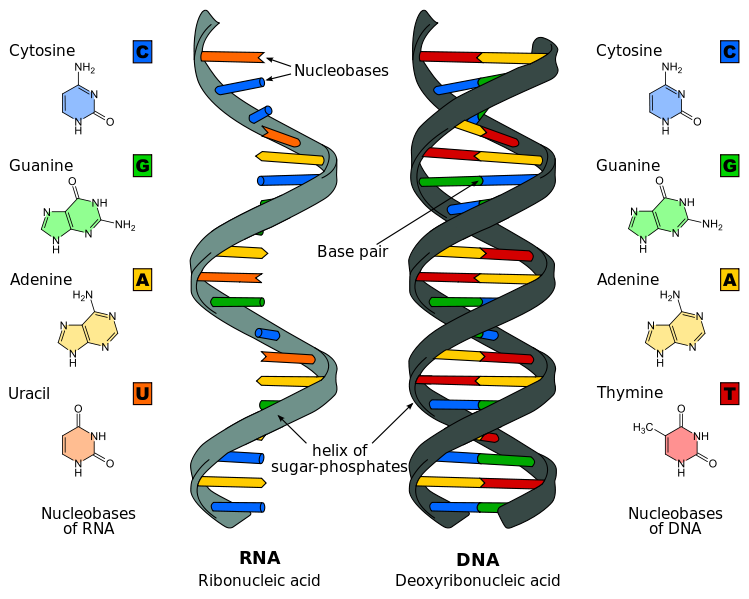As we near the end of 2010, everybody’s talking about the biggest science stories of the year. I’ve been thinking about these four:
 May 20: Craig Venter’s team synthesizes a bacterial genome in the lab, sticks it into an empty bacterial cell, and watches it replicate. Venter calls it the “first synthetic cell“; many headlines prefer “synthetic life“. Controversy ensues.
May 20: Craig Venter’s team synthesizes a bacterial genome in the lab, sticks it into an empty bacterial cell, and watches it replicate. Venter calls it the “first synthetic cell“; many headlines prefer “synthetic life“. Controversy ensues.
 July 23: NASA scientists take the new Mars rover, Curiosity, for a test drive. When it heads to the Red Planet, in late 2011, Curiosity will hold several instruments equipped to examine whether Mars has “environmental conditions favorable for preserving evidence of life, if it existed.”
July 23: NASA scientists take the new Mars rover, Curiosity, for a test drive. When it heads to the Red Planet, in late 2011, Curiosity will hold several instruments equipped to examine whether Mars has “environmental conditions favorable for preserving evidence of life, if it existed.”
August 23: Federal judge Royce Lamberth puts the kibosh on federally funded stem cell research, citing a 1995 law that forbids the use of federal dollars for creating or destroying human embryos. The case is going through various appeals and will likely end up in the Supreme Court.
 December 2: Scientists report finding bacteria that thrive on arsenic and, supposedly, use it instead of phosphorous to build strings of DNA. This is big news, as phosphorus was thought to be necessary for life as we know it. Then a slew of scientists hammer the paper. Controversy ensues.
December 2: Scientists report finding bacteria that thrive on arsenic and, supposedly, use it instead of phosphorous to build strings of DNA. This is big news, as phosphorus was thought to be necessary for life as we know it. Then a slew of scientists hammer the paper. Controversy ensues.
Each of these stories assumes a fairly robust understanding of what life is. If you make an artificial cell, you must know what a cell is. If you create a machine that screens for signs of life, you must know what signs of life are. Congress banned funding of human embryonic stem cells under the assumption that embryonic stem cells are forms of human life. The arsenic-loving bacteria (should they exist as described) upend the presumably solid notion that phosphorus is crucial for life.
Alas, we are far from defining, let along understanding, what life is. In a series of (free!) essays in this month’s issue of Astrobiology, I was amazed to read that although scientists have been trying to define life for a long time, no one can agree on even a suitable rough draft.
Is life simply the ability to reproduce? Well, no. If that were true, as one scientist famously noted, then “Two rabbits—a male and female—are alive but either one alone is dead.” In 1994, a NASA committee deemed that life is “a self-sustaining chemical system capable of Darwinian evolution.” That’s not quite right, either: certain non-living crystals, for example, can seed the growth of new crystals and even pass down traits such as molecular orientation. Some scientists have much broader definitions: life as a triad of a program, a metabolism and a container (the PMC model), for example, or life as a series of negative feedback loops.
Whatever life is or isn’t, the concept seems to underlie quite a bit of scientific research these days, in a variety of fields. So I think it’s about time you scientists have some retreats and workshops and conference calls to hash out some sort of consensus statement. I know you’ve been working on it forever, but, you know, the perfect is the enemy of the good and all that. Perhaps a good resolution for 2011.
**
Image sources: Animal cell model, NASA’s Curiosity rover, human embryonic stem cells, DNA schematic
Can I try? Here goes:
Life is a self-sustaining chemical process which uses elements in the surrounding environment for sustenance, and can give its own form to a new instance with high exactitude.
Same problem as the rabbits there, though; once a living thing loses the ability to reproduce, or before it has it, it doesn’t qualify it. Women would count as dead after menopause.
Jonathan,
How about this:
“Life is a self-sustaining chemical process which uses elements in the surrounding environment for sustenance, and has the potential, under specific conditions, to give its own form to a new instance with high exactitude.”
Also: remember that this definition is of life as a process, not as a state of a particular being.
If the process in general is recognized to be life (example: in humans), and a specific individual organism manifests that process but only in partial ways (eg. a human being who is not self-sustaining, or is barren), it may still be called alive, depending on your definition of the state “alive” which has something to do with the process “life”, but is identical to it.
Would we recognize life if we saw it? I mean, for example, are viruses alive? How about prions?
For the record, viruses are alive (IMO). Prions are probably alive (IMO). That is, i expect that if i knew more about prions, i’d call them alive.